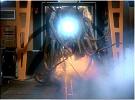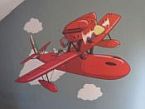Ah, so you're simply trolling.
Not at all. I was simply stating established facts that are so well established that only someone with not the slightest bit of background knowledge on the subject could disagree. I'll worry about my own creds, thanks. I've been eating, well, guys' like you, lunch on this subject for more than a decade.
Since I'm at home now and can dig up my archive, I'll refer you to the book(s) you CLAIM, probably in error, to have read. I'll assume you have the basic skills to get the full bibliographic reference to
The First Team and
The First Team and the Guadalcanal Campaign since you claimed to have read things written by Lundstrom (presumedly JOhn Lundstrom, not Alouitious Nagadoches Mushroom Lundstrom or some other bailout excuse I usually get from guys like you).
First Team (hereafter FT). Throughout the book generally and specifically, vis combat losses vs type. p.448. "From February 1942 through June 1942, the Navy's fighting squadrons shot down seventeen Japanese carrier fighters (3 A5M4s and 14 Zero fighters, sixteen pilots killed), while losing to them only ten wildcats (7 pilots killed)."
Lundstrom is fairly detailed in his counts, but credits two missing F4Fs to IJN A6Ms, although he notes that one may have been lost retiring along with VF8, and one from VF2 at Coral Sea. I make it 14 A6Ms to 8 F4Fs, with room for wiggles at about 1.8:1. It might even bet better yet for the F4Fs, depending on how you read the material about friendly AAA, that accounted for at least SOME of the F4Fs at Coral Sea. Regrettably, even a good researcher like Lundstrom can't account for every moment. But the data, such as they are, do not indicate any general Zero superiority over the Wildcat, much less anything like air supremacy. When matched on even terms vis a vis range, fatigue, and all that, the F4Fs won consistently.
Of course, if there were ANY merit to the claim of the vast superiority of IJN pilots, it should not have mattered that three of the planes were A5Ms, since that plane too was vastly more maneuverable than the F4F. If it were all about superior IJN pilots and superior IJN maneuverability, and alleged ignorance of USN pilots on how to combat a.c. that had better characteristics in some envelope, you'd expect some data to support that idea. But there is no data to support that idea. The claimed superiority of Zekes+IJN pilots over USN pilots in F4Fs is a complete, wholesale, fabrication that is utterly and completely devoid of any shade, shred or substance whatsoever.
Flatley's assessment right after Midway (25 June) was "Our planes and pilots, if properly handled, are more than a match for the enemy." (FT p.445).
Thach, by contrast, hated the F4F. But he still came out thinking that Japanese pilots were relatively untalented. "Any success our pilots may have against the Zero fighter.. is the result of the comparatively poor marksmanship of the Japanese, stupid mistakes made by a few of their pilots, and superior marksmanship and team work of some of our pilots." (FT p.441) and Thach was writing about an interval in which only he and two other pilots had even used the Beam Defense (aka Thach Weave).
Now, Lundstrom's second work (FTatGC) revised the F4F:A6M loss ratio from Coral Sea+Midway to 10:15 (p.4). So we again have a little wiggle room. A low end Wildcat superiority of 1.4 or 1.5:1 to a high end of around 2:1 from February 1942 thru June 1942.
Assuming that you'd read the latter source, you might have noticed where Lundstrom wrote "As demonstrated in The First Team, the U.S. Navy's deflection shooting and mutual support tactics already provided the foundation for success, despite the inferior performance of the rugged F4F-4 Wildcat.
The point is, NO ONE could make a credible claim of having read either of Lundstrom's two books on the subject and walk away claiming that the gist of Lundstrom's research shows that the A6M+pilot was superior to the F4F+pilot, or that the A6M was across the board superior, or that Japanese pilots were generally superior, or that the A6M dominated the fight in early war engagements, or even that the A6M achieved air superiority. At best, under sustained conditions that tried pilots and planes over a campaign, the Japanese eked out a basic draw at Guadalcanal against land based F4Fs. They consistenly lost, and badly at that, to US VF units in May and June 1942.
as a result a whole type was decided to be unfit for the front),
As usual, you are incorrect. Not only was the F4F type NOT decided to be "unfit for the front," it was in fact deployed to the PTO for front line carrier ops through 1945. It was the go-to plane for CVEs that were expected to provide their own air cover and support for amphibious ops. Granted, no design stayed static over the war. The FM2 Wildcat added about 100 HP but it otherwise had about the same clim/turn characteristics, and it manhandled later war Japanese types. (It shed weight by losing two of the six .50cal seen on the F4F-4, but it added fuel capacity and larger ammunition bays for the four .50s it retained, so the weight came out about the same.)
Show me a fellow who rejects statistical analysis a priori and I'll show you a fellow who has no knowledge of statistics.
Didn't we have this conversation already?











